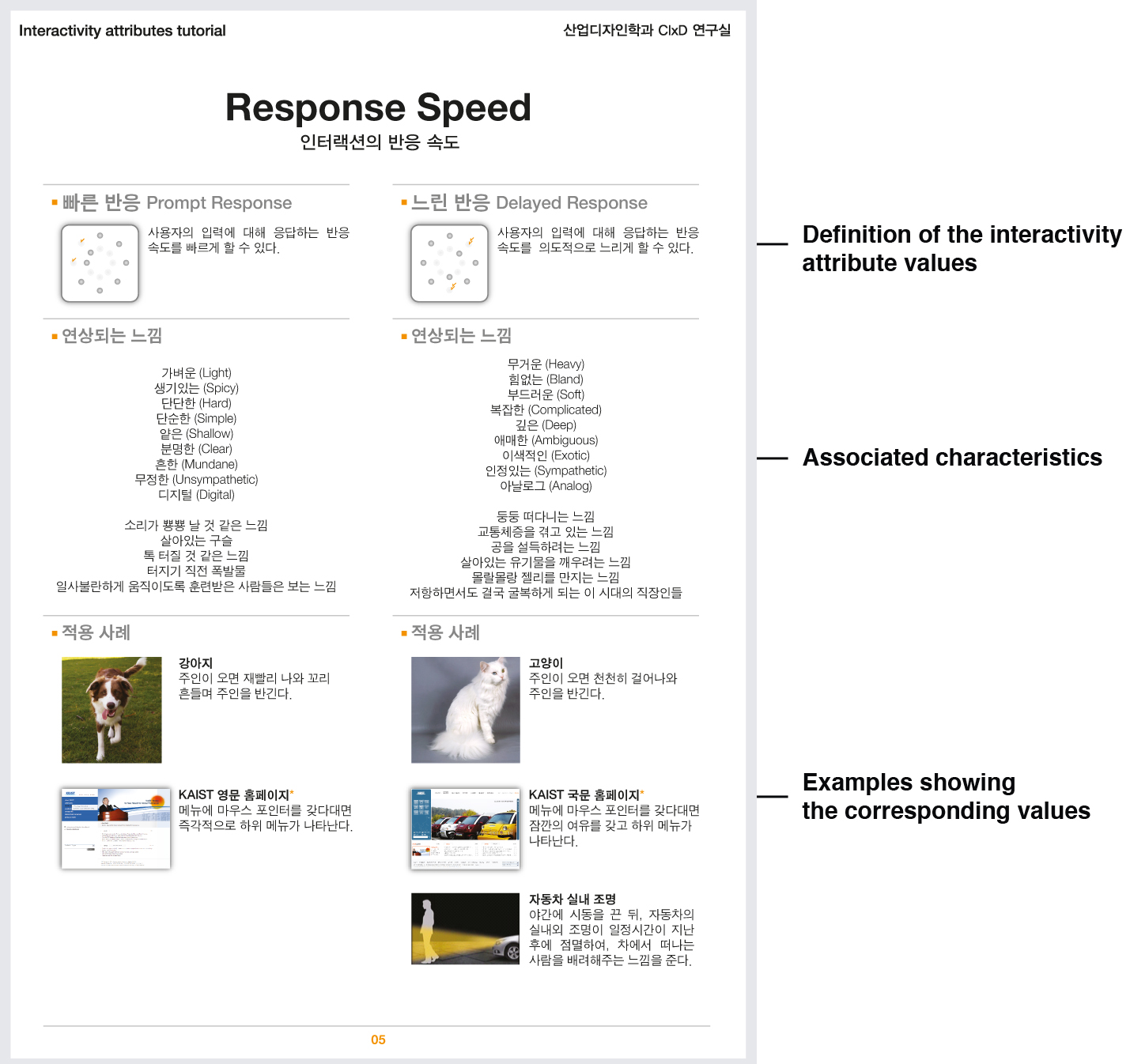cixd creative interaction design lab.
Interactivity Attributes
We have conducted a set of studies to enable interaction designers and researchers to concretely articulate and craft the dynamic and invisible qualities of interactive products, which we call interactivity. In this project, we developed a theoretical framework that describes interactivity attributes and investigated its effects on the ways designers think and create interactive products. Also, we developed new prototyping tools that enable interaction designers and developers to tangibly and creatively explore and manifest invisible and dynamic qualities of interactivity, without being tied in any specific forms of interfaces such as graphical user interfaces, tangible user interfaces, touch interfaces, and gestural interfaces.
-
Interactivity Attributes Tutorial
Lim, Y., Lee, S., and Kim, D. (2011). “Interactivity attributes for expression-oriented interaction design,” International Journal of Design, Vol. 5, Issue 3, 113-128. [SSCI]Abstract
This study proposes a new way of conceptualizing and designing interactive artifacts that emphasizes the importance of articulating sophisticated qualities of interactivity for promoting the design of aesthetic interaction. To make this possible, we introduce a set of attributes that solely describe the quality of interactivity, which is dynamic and invisible unlike other visual properties of an interactive artifact, and we call them interactivity attributes. In order to examine and explore the effects of applying interactivity attributes in interaction design, we conducted a series of studies in which we observed design students designing a set of interactive artifacts with and without the introduced interactivity attributes. We found that sensitizing the design students with these attributes changed their ways of approaching the design of interactivity of the artifacts. Designs became more expressive, quality descriptions were more sophisticated, both input- and output-behavior concepts of the interactive artifacts were considered consciously, and new materials and interaction styles were considered and applied.
Image

An example of IA Tutorial
-
Interactivity Sketcher
Woo, J., Kim, D., Kim, S., Jo, J., and Lim, Y., “Interactivity Sketcher: Crafting and Experiencing Interactivity Qualities,” Proceedings of CHI2011 Work-in-Progress, ACM Press. (Vancouver, Canada, May 7-12, 2011), pp. 1429-1434Abstract
In this paper, we introduce the Interactivity Sketcher, which is an interactivity designing tool that can visualize and experience invisible interactivity in a tangible way by controlling Interactivity Attributes (IAs). The Interactivity Sketcher is composed of the IA application, input devices, output devices, and IA controllers. The Interactivity Sketcher can help to explore various qualities of interactivity by visualizing and manipulating the relationship between an input and an output through the IA controllers and the IA application. We expect that this tool will enable interaction designers to visualize their own thoughts of interactivity qualities so that they will be able to create their design as if they had 'sketched' it.
Video
-
Interactivity Attributes Framework
Lim, Y., Lee, S., and Lee, K., “Interactivity Attributes: A New Way of Thinking and Describing Interactivity,” Proceedings of CHI2009, ACM Press, Boston, USA, April 4-9, 2009.Abstract
We propose a new perspective, seeing interactivity that is the immaterial part of an interactive artifact as something concretely describable and perceivable as we do with physical materials. In order to examine the validity of this proposal, we extracted a set of interactivity attributes to be used as a design language for thinking and describing interactivity in a new way, and conducted an online survey with 14 Flash prototypes representing pairs of values of 7 interactivity attributes we extracted. The result showed that all the interactivity attributes were significant, and participants experienced distinctive and meaningful emotional effects for different interactivity attributes.
Video